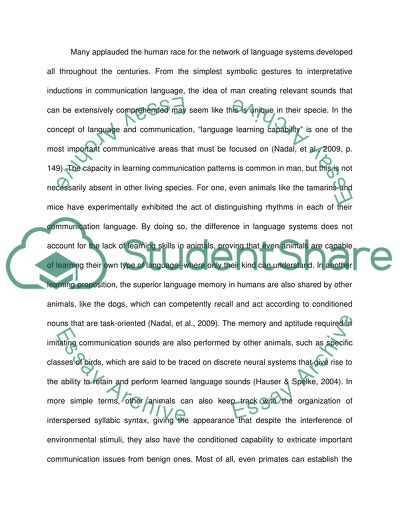Cite this document
(“Human Intellect: Uniqueness Analyzed Essay Example | Topics and Well Written Essays - 2000 words”, n.d.)
Retrieved from https://studentshare.org/environmental-studies/1407820-is-there-something-unique-about-human-learn-and
Retrieved from https://studentshare.org/environmental-studies/1407820-is-there-something-unique-about-human-learn-and
(Human Intellect: Uniqueness Analyzed Essay Example | Topics and Well Written Essays - 2000 Words)
https://studentshare.org/environmental-studies/1407820-is-there-something-unique-about-human-learn-and.
https://studentshare.org/environmental-studies/1407820-is-there-something-unique-about-human-learn-and.
“Human Intellect: Uniqueness Analyzed Essay Example | Topics and Well Written Essays - 2000 Words”, n.d. https://studentshare.org/environmental-studies/1407820-is-there-something-unique-about-human-learn-and.


